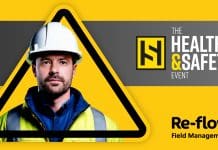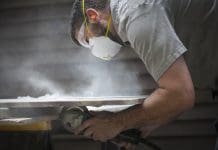A firm has been sentenced for safety failings after a crane had to be used to rescue a workman who fell into a lift pit…
Jehu Project Services Ltd has been prosecuted after a worker was seriously injured falling into a lift pit.
The incident occurred in July 2015 at a construction site in Cardiff. Specialist drilling contractor Stephen Harrison was employed to refurbish a 73-bed care home. He fell into the basement of a lift pit after he stepped onto the ground floor from a tower scaffold. A loose concrete block caused the contractor to fall backwards into a skip located on the floor below.
The workman had to be lifted out by a specialist a Fire and Rescue team using a tower crane.
As a result of the fall, the worker shattered his vertebrae, had five broken ribs and punctured his lung. His injuries are said to be life-changing.
A subsequent Health and Safety Executive (HSE) investigation revealed the system of lightweight barriers around the edges and “bean bags” below had been removed because it was incompatible with the work that needed to be done. After the incident scaffolding was erected to prevent further accidents.
The case, which was brought before Newport Crown Court, found there was a lack of effective site management and an ineffective Temporary Works Management System. Furthermore, the Construction Phase Plan did not consider the obvious risks of working at height.
Jehu Project Services Ltd pleaded guilty to breaching Construction (Design and Management) Regulations 2015, Regulation 13(1) and Work at Height Regulations 2005, Regulation 6(3) and was fined £143,000 and ordered to pay full costs of £15,029.30.
HSE Inspector Liam Osborne, who brought the case, said: “Jehu Project Services Ltd had been given many warnings in the past by HSE about the lack of effective planning, managing and monitoring on their construction sites, as well as warnings about unsafe working at height.
“The court heard some really positive steps the company are now taking to put these matters right, including making substantial management changes.
“It is crucial that construction firms properly think through the risks involved before starting work, they then need to ensure there is a workable plan to iron-out or manage the resultant dangers.
“There is a clear hierarchy for managing work at height risks, site managers need to prevent it if possible and then provide suitable fixed barriers.
“Lower-order measures, such as soft-landing systems or the use of harnesses should only be selected as a last resort and if it is safe and appropriate to do so”.







![[VIDEO]What to expect when you’re inspecting: Using DorTrak for fire door inspections](https://www.pbctoday.co.uk/news/wp-content/uploads/2025/02/maxresdefault-218x150.jpg)





